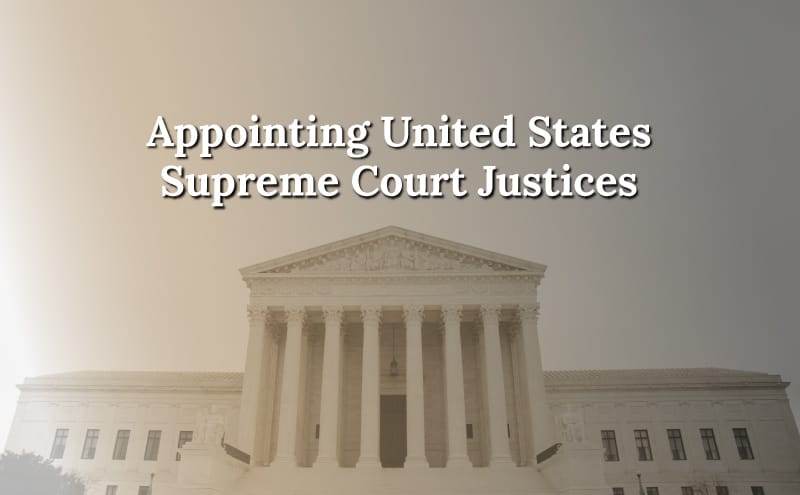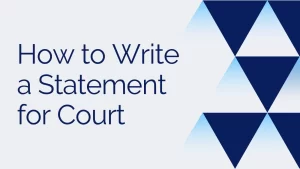which best explains how the president selects a justice for the supreme court?
How Does the President Select a Justice for the Supreme Court?
The appointment of a Supreme Court Justice is a critical event in American politics. It is a process that carries immense significance due to the substantial judicial power wielded by the Supreme Court as the highest appellate court in the federal judiciary. Appointments to the Supreme Court are relatively infrequent, occurring only once or twice, or sometimes not at all, during a particular President’s time in office. These appointments are unique as Justices are granted what amounts to lifetime tenure, a design in the Constitution intended to ensure the Court’s independence from the influence of the President and Congress.
The President Nominates a Candidate
Whenever there is a vacancy on the Supreme Court, whether due to a justice’s retirement, death, or resignation, the president has the power under the Constitution to nominate a candidate to fill that vacancy. The president’s choice must then be confirmed by the Senate. So the president’s nomination is the first step in selecting a new Supreme Court justice.
Vacancies on the Court
Vacancies on the Supreme Court do not happen very often. Supreme Court justices serve lifetime appointments, and most choose to serve for many years until retirement or death. On average, a vacancy on the Court only occurs once every few years. When an opening does occur, the president acts quickly to put forth a nominee because appointing a justice is one of the most influential and lasting decisions a president can make.
Vetting Potential Nominees
Once a vacancy is announced, the president consults with advisors to develop a list of potential nominees. The White House staff thoroughly vets each candidate, along with the FBI and American Bar Association. They look closely at the nominee’s professional record, writings, speeches, and personal background. Sources of concern or controversy are identified. The goal is to put forth a nominee with a high chance of winning Senate confirmation.
Announcing the Nomination
After vetting is complete, the president announces his nominee in a Rose Garden ceremony at the White House. The announcement highlights the nominee’s qualifications and judicial philosophy. The president hopes to shape public opinion and build momentum for the nominee’s confirmation.
The Constitutional Framework
The Constitution provides a concise framework for appointing Supreme Court Justices. The “Appointments Clause” (Article II, Section 2, Clause 2) stipulates that the President “shall nominate, and by and with the Advice and Consent of the Senate, shall appoint … Judges of the supreme Court.” This process of appointing Justices has evolved over the centuries but maintains its fundamental feature: the shared authority between the President and the Senate. To secure a seat on the Court, a nominee must first be selected by the President and then confirmed by the Senate.
The Senate Judiciary Committee
The nomination is first referred to the Senate Judiciary Committee. The committee holds a hearing where the nominee testifies and answers questions from senators on the committee. The hearing can last several days. Senators evaluate the nominee’s fitness for the Court based on their record, qualifications, judicial philosophy, and temperament.
Senate Hearings
After the initial hearing, the Judiciary Committee holds further hearings where legal experts, advocacy groups, and other witnesses testify about the nominee. Senators can then question these witnesses about the nominee’s background and views. The hearings help senators scrutinize the nominee before voting.
Committee Vote
Once hearings conclude, the Judiciary Committee votes on whether to report the nomination favorably to the full Senate. If the committee votes against the nominee, the nomination usually stalls. If approved, the nomination moves forward for a vote by the whole Senate.
Full Senate Vote
The Senate majority leader schedules a confirmation vote for the full Senate. A simple majority (51 votes) is needed to confirm the nominee. If confirmed, the nominee is sworn in as a Supreme Court justice. If the Senate votes down the nominee, the president must nominate a new candidate, restarting the process.
Factors That Influence the President’s Choice
When considering nominees for the Supreme Court, presidents weigh several factors that can impact the success and legacy of the appointment.
Judicial Philosophy and Ideology
One major factor is the nominee’s judicial philosophy and ideological views. Presidents often nominate someone who aligns with their own political ideology, leading to nominees who are perceived as either liberal or conservative. Justices serve life terms, so their ideology shapes the Court’s rulings long after the president leaves office.
Demographics
Presidents may consider demographics like gender, race, ethnicity, and age when nominating a justice. They weigh how the nominee’s background impacts public perception, Senate confirmation, and representation on the Court. For example, presidents may make history by nominating the first female, African American, or Hispanic justice.
Qualifications and Experience
The nominee’s professional experience and qualifications are important factors. Most nominees have served as federal appeals court judges, although some nominees have come directly from roles like solicitor general or academic appointments. Highly credentialed nominees are viewed as qualified for the Court.
Relationships and Politics
Relationships with senators can shape the confirmation process. Nominees with good relationships with key senators may draw broader bipartisan support. Nominating a senator’s former staffer can build goodwill. Nominations may also be influenced by election year politics and the composition of the Senate.
The Role of Politics
Political considerations often play a crucial role in Supreme Court appointments. It is widely assumed that Presidents tend to nominate candidates whose political or ideological beliefs align with their own. The political nature of this process becomes most apparent when a President proposes a nominee with controversial views, sharp partisan or ideological differences exist between the President and the Senate, or when critical constitutional issues are at stake.
Professional Excellence and Integrity
Throughout history, a recurring theme in the Supreme Court appointment process has been the perceived need for professional excellence in a nominee. In recent presidencies, nominees have typically held positions as U.S. appellate court judges at the time of their nomination. Additionally, a nominee’s integrity and impartiality have been vital criteria for Presidents when making their selection for the Court.
The Timing of Nominations
The speed at which a President selects a nominee for a vacancy can vary significantly during different administrations. Some Presidents announce their nominee within days of a vacancy becoming public, while others may take weeks or even months. Factors influencing the speed of selection include whether the President had prior knowledge of a Justice’s retirement plans and the timing of a Justice’s departure from the Court during the calendar year.
Recess Appointments
In rare instances, Presidents have made Court appointments without Senate consent during Senate recesses. These “recess appointments” are temporary and expire at the end of the Senate’s next session. They have been a source of controversy because they bypass the Senate’s “advice and consent” role. The last recess appointment to the Court occurred in 1958 when President Eisenhower appointed Potter Stewart as an Associate Justice; however, he was later confirmed by the Senate.
Recent Developments
On January 27, 2022, Justice Stephen Breyer announced his intention to retire from the Supreme Court at the end of its current term, provided his successor is nominated and confirmed. On February 28, 2022, President Biden officially nominated Judge Ketanji Brown Jackson to fill the anticipated vacancy left by Justice Breyer’s retirement.
This information is accurate up to the confirmation of Justice Amy Coney Barrett in 2020. For the latest updates regarding the Jackson nomination, please refer to CRS Insight IN11878, President’s Selection of a Supreme Court Nominee: The Nomination of Judge Ketanji Brown Jackson in Historical Context, by Barry J. McMillian.
The Appointment Process in Action
Examining how past presidents navigated nominating and confirming justices provides insight into how the process unfolds in action.
Recent Nominations and Confirmations
Recent nominations by Presidents Trump, Obama, and Bush of Justices Gorsuch, Kavanaugh, Sotomayor, and Alito provide case studies. Each went through extensive vetting, hearings, and political negotiations before earning Senate confirmation on largely party line votes.
Historical Trends and Notable Appointments
Historically, approximately one third of presidential nominees for Supreme Court have not been confirmed by the Senate. Looking back at successes like Marshall and rejections like Bork sheds light on the forces that shape the appointment process over time.
Conclusion
The process of selecting a Justice for the Supreme Court is a complex and highly scrutinized one. It involves a delicate balance of constitutional provisions, political considerations, professional qualifications, and timing. Each nomination carries significant consequences, impacting the Court’s direction and the nation’s legal landscape.
FAQs
1. How long do Supreme Court Justices serve?
Supreme Court Justices serve for life, a design intended to ensure their independence from political pressures.
2. Can a President make a recess appointment to the Supreme Court?
Yes, Presidents can make recess appointments to the Supreme Court, but these appointments are temporary and subject to Senate approval.
3. What factors influence the speed of nominating a Justice for the Supreme Court?
Factors such as prior notice of a Justice’s retirement and the timing of that departure can influence the speed of nomination.
4. How do Presidents typically choose Supreme Court nominees?
Presidents often select nominees whose political and ideological beliefs align with their own.
5. What role does the Senate play in Supreme Court appointments?
The Senate plays a crucial role by providing its “advice and consent” for Supreme Court nominees, ultimately confirming or rejecting them.
6.How long do Supreme Court confirmation hearings typically last?
The confirmation process can take around 2-3 months from nomination to final Senate vote. Senate Judiciary hearings alone often last 3-4 days with extensive questioning.








